The Story of the Last Chrysanthemums
8 /10 1 Votes8
Music director Shiro Fukai, Senji Ito | 8/10 IMDb Genre Drama Duration Language Japanese | |||||||||||||||||||||||||||||||||
 | ||||||||||||||||||||||||||||||||||
Release date October 13, 1939 (1939-10-13) Cast Shôtarô Hanayagi (Kikunosuke Onoue), Kôkichi Takada (Fukusuke Nakamura), Gonjurô Kawarazaki (Kikugoro Onoue), Kakuko Mori (Otoku), Tokusaburo Arashi (Shikan Nakamura), Yôko Umemura (Osata)Screenplay Yoshikata Yoda, Matsutaro Kawaguchi Similar movies Related Kenji Mizoguchi movies | ||||||||||||||||||||||||||||||||||
The Story of the Last Chrysanthemums (残菊物語, Zangiku monogatari), also translated as The Story of the Last Chrysanthemum and The Story of the Late Chrysanthemums, is a 1939 Japanese film directed by Kenji Mizoguchi, about a male actor specialising in playing female roles in late 19th century Japan.
Contents
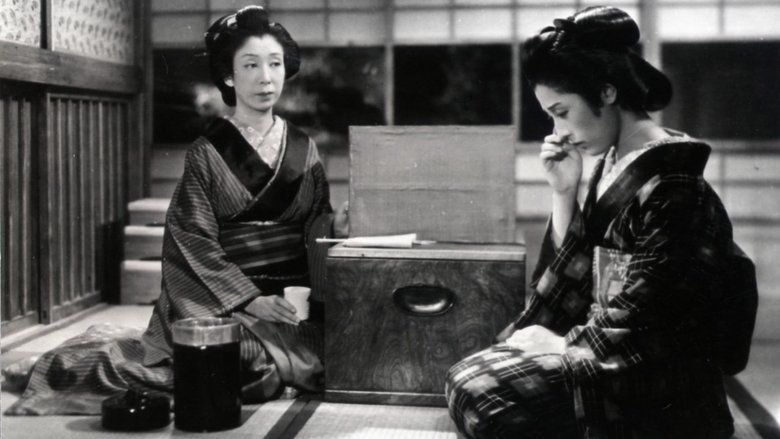
Many regard the film as Mizoguchi's greatest pre-war achievement, praising its long takes and mise-en-scène composition.

Plot
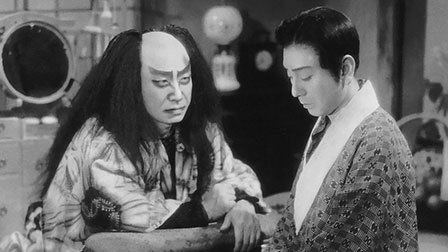
The film is set in Japan in 1885, alternating largely between Tokyo and Osaka.

Kikunosuke Onoe, generally called Kiku, played (in his movie debut) by the stage actor Shotaro Hanayagi, is the adopted son of a famous Kabuki actor, who is training to succeed his father in an illustrious career. Whilst hypocritically praising Onoe's acting to his face, the rest of his father's troupe deride him behind his back. Otoku (Kakuko Mori), who lives at the father's house as the young wet-nurse of the infant son of the father's natural son, is the only one frank enough to disclose his artistic shortcomings and urge him to improve himself. When Otoku is dismissed by Kiku's family for her over-closeness to the young master, with the potential for scandal, Kiku tracks her down and states that he wishes to marry her. His family is outraged and Kiku is forced to leave Tokyo, taking the train to Nagoya, honing his art away from his father, much to the latter's wrath.
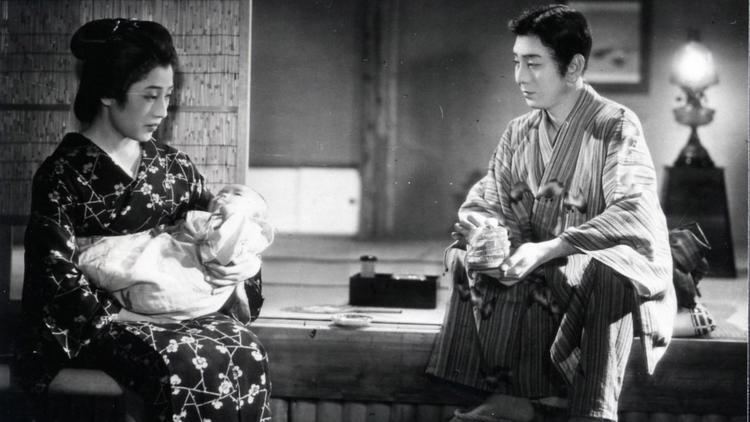
The story jumps by a year. Kiku is acting alongside his uncle, Tamiro Naritaya in Osaka, but remains dissatisfied, and wishes to join a travelling troupe. Then Otoku tracks down Kiku and re-inspires him. She becomes his common law wife and continues to encourage him. When his uncle dies, four years later, he decides to join a travelling troupe and their times together become even harder. A further four years pass and we see Kiku and Otuko on the road, their fellow actors squabbling over small amounts of money. Kiku has changed in character to the point where he even strikes Otuko. She still loves him, but his love has clearly faded. Their position worsens and Otoku becomes very sick.
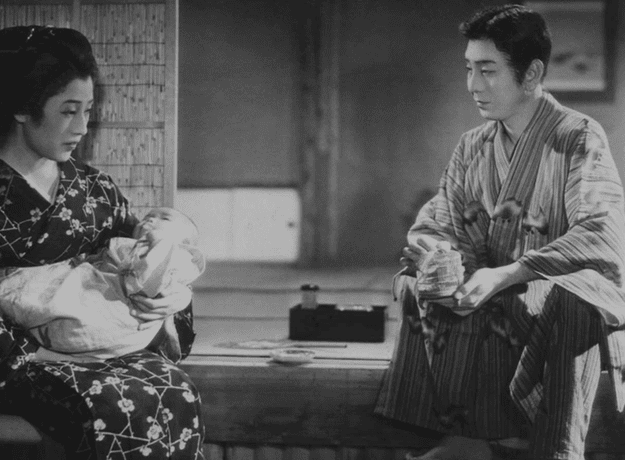
Otoku goes to meet Kiku's brother to beg that he be given an acting role in Tokyo, re-using the famous family name. He agrees that Kiku can play the part he was due to play on two conditions: one, that his acting has improved; two, that he and Otuko split, as this is needed to reconcile with their father. Fuku returns with Otoku to fetch Kiku.
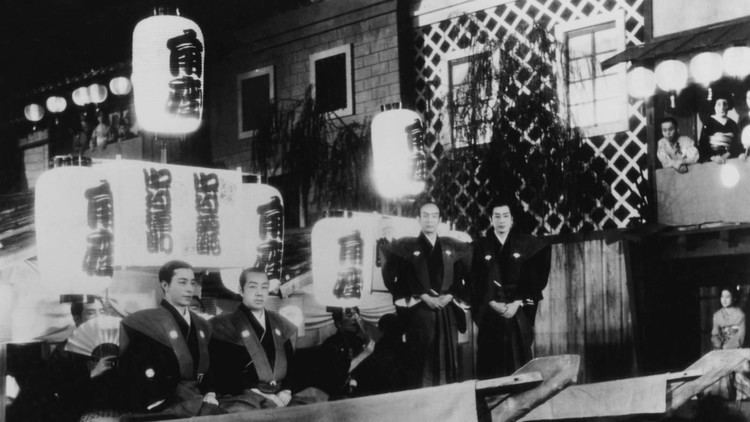
We then see Kiku on-stage giving a bravura performance of Sumizome, a difficult and critical female role. He has at last found his niche and the fame he had always sought as a Kabuki actor. Otoku watches sadly from the wings, but she is happy for him. The family agree that Kiku may perform in Tokyo. As Kiku boards the train to Tokyo Otoku cannot be found, and Fuku hands him a letter from her, explaining everything. His companions explain that paradoxically he must continue to Tokyo in order to make Otoku's sacrifice worth while. He is a success.
The Tokyo troupe visit Osaka and have a triumphant welcome. Kiku's father says that Kiku may take pride of place in the river parade after the performance. Otuko's father comes and tells Kiku that she is ill and will die that night. Kiku hesitates as it is his evening of glory, but his father forces him, saying how much Otoku helped him. Ultimately Kiku's father accepts that Kiku may marry Otoku and Kiku tells her this, but this reconciliation comes only when she is already on her deathbed (inferred as tuberculosis) in her old family home. Proud that he is at last happy, she ushers him to join the river parade, and says they will never meet again.
She dies at home with her sister and uncle, as her husband's parade passes the window.
Cast
Production
The film's production happened at a time of transition for Mizoguchi. In 1939 he was appointed a National Film consultant in Japan and sent to Manchuria with five other film directors. He also left Toho for Shochiku Studios after several years of success at Toho. The Story of the Last Chrysanthemums is his first film in a trilogy about theater in the Meiji period. It was very successful in Japan and won 2nd place of Kinema Jumpo's list of best films. Mizoguchi also won an Education Ministry Award for the film.
Style
Mizoguchi used many long takes in the film, often lasting up to six minutes. He also used many dolly shots for dramatic effects and in order to enhance the emotional state of the characters. He utilized both the foreground and the background in many shots. Derek Malcolm said that "If Mizoguchi was the poet of women, he was also the poet of houses, rooms, landscape and urban vistas. His period detail and sumptuous camera style lent his stories a fantastic naturalism, heightened by an almost musical editing style."
Legacy
Jonathan Rosenbaum called it Mizoguchi's greatest film and praised his "refusal to use close-ups…the theme of female sacrifice that informs most of his major works is given a singular resonance and complexity here." Derek Adams of Time Out called it "a heartbreaker to end them all" and praised its cinematography. Richard Brody called it "one of the cinema’s great outpourings of imaginative energy." Noel Burch called it "one of his most deeply ‘feminist’ films" and Tony Rayns called it "the peak of Mizoguchi's art."
John Pym praised the film's sets, saying that they were "crammed with human detail" and that when they were "sometimes offset by shots of notably uncluttered spaces, [it] is to highlight the isolation of the two principles in a teeming world dominated by class prejudice, harsh economics, and sheer blank human indifference."
The film was selected to be screened in the Cannes Classics section of the 2015 Cannes Film Festival.
References
The Story of the Last Chrysanthemums WikipediaThe Story of the Last Chrysanthemum IMDb The Story of the Last Chrysanthemums themoviedb.org
